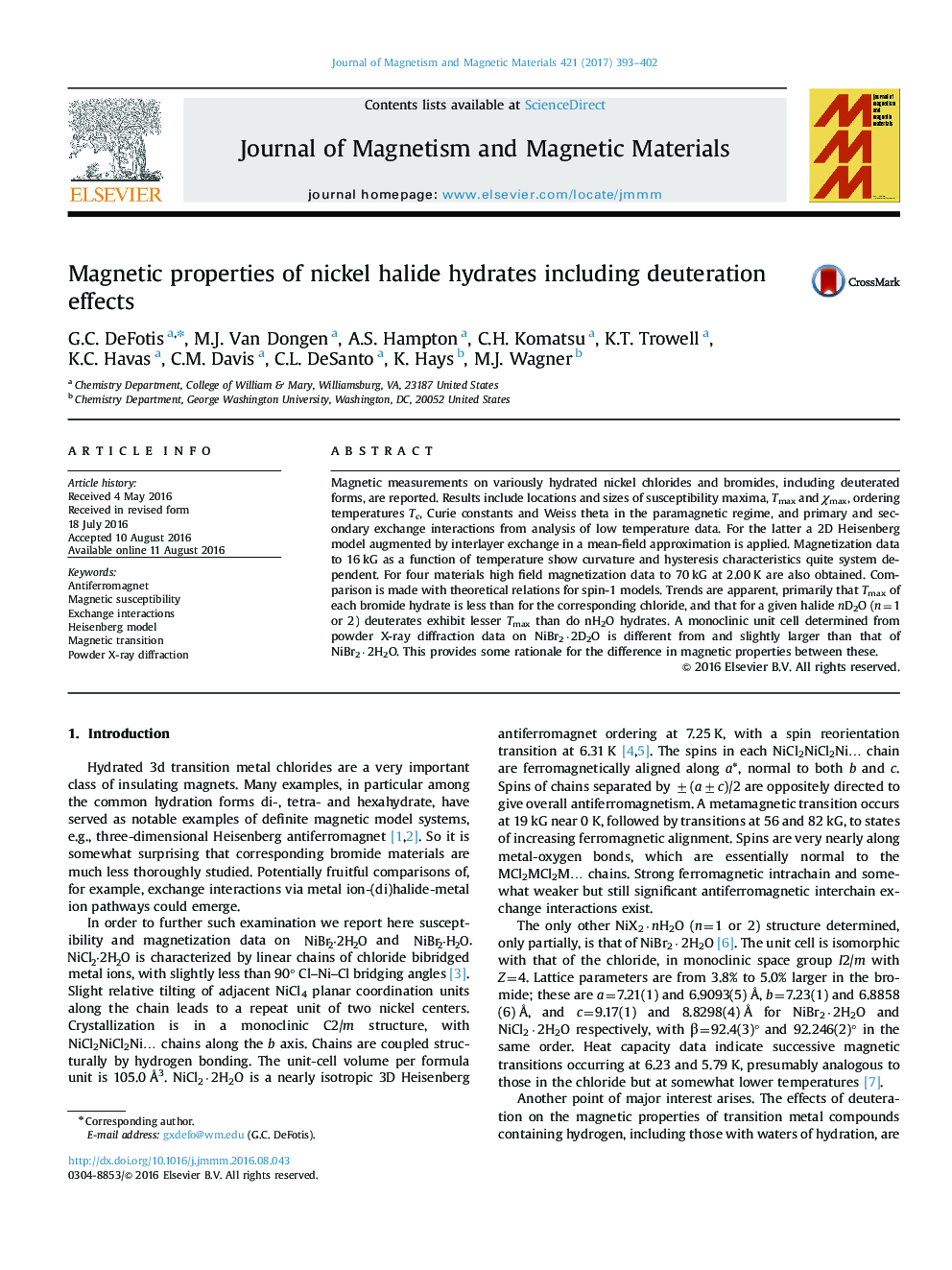| Article ID | Journal | Published Year | Pages | File Type |
|---|---|---|---|---|
| 1797676 | Journal of Magnetism and Magnetic Materials | 2017 | 10 Pages |
•The magnetism of Ni(II) chloride and bromide dihydrates and monohydrates is studied.•Effects of replacing H2O by D2O are examined for both hydration states and both halides.•Exchange interactions in bromides are weaker than in corresponding chlorides.•Exchange interactions are weaker in D2O than in corresponding H2O containing systems.•The unit cell of NiBr2·2D2O is different from and slightly larger than that of NiBr2·2H2O.
Magnetic measurements on variously hydrated nickel chlorides and bromides, including deuterated forms, are reported. Results include locations and sizes of susceptibility maxima, Tmax and χmax, ordering temperatures Tc, Curie constants and Weiss theta in the paramagnetic regime, and primary and secondary exchange interactions from analysis of low temperature data. For the latter a 2D Heisenberg model augmented by interlayer exchange in a mean-field approximation is applied. Magnetization data to 16 kG as a function of temperature show curvature and hysteresis characteristics quite system dependent. For four materials high field magnetization data to 70 kG at 2.00 K are also obtained. Comparison is made with theoretical relations for spin-1 models. Trends are apparent, primarily that Tmax of each bromide hydrate is less than for the corresponding chloride, and that for a given halide nD2O (n=1 or 2) deuterates exhibit lesser Tmax than do nH2O hydrates. A monoclinic unit cell determined from powder X-ray diffraction data on NiBr2·2D2O is different from and slightly larger than that of NiBr2·2H2O. This provides some rationale for the difference in magnetic properties between these.
